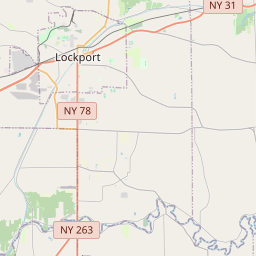Welcome to Iroquois National Wildlife Refuge
Historical marker location:
Alabama, New York
( Marker can be reached from Lewiston Road (New York State Route 77) ½ mile south of Salt Works Road (County Route 43), on the right when traveling west.)







© OpenStreetMap contributors
In 1777, the Battle of Saratoga took place in upstate New York and is considered a turning point in the American Revolution. It was the first major American victory and led to France recognizing the United States as a sovereign nation and entering the war as an ally.
About Genesee County
Genesee County Timeline
Genesee County, located in western New York State, has a rich history that dates back to the early 1800s. The county was officially established in 1802 and named after the Genesee River, which flows through the region. Prior to European settlement, the area was inhabited by Native American tribes, primarily the Seneca Nation.
In the early years of settlement, Genesee County developed rapidly due to its fertile land, abundant water resources, and access to transportation routes. The construction of the Erie Canal in the 1820s greatly facilitated trade and contributed to the county's prosperity. As a result, agriculture became the dominant industry, with crops such as wheat, corn, and oats being cultivated.
During the mid-19th century, Genesee County experienced a period of economic growth and urbanization. The county's largest city, Batavia, became a center for manufacturing and trade. Industries such as textiles, ironworks, and brewing flourished. Additionally, the county became an important stop on the Underground Railroad, assisting escaped slaves in their journey to freedom.
In the late 19th and early 20th centuries, Genesee County underwent significant changes due to industrialization and technological advancements. Agriculture became more mechanized, leading to a decline in the number of small farms. Manufacturing and other industries diversified, with companies like Massey-Ferguson and Doehler-Jarvis establishing operations in the county. Today, Genesee County continues to be a vibrant community, known for its agriculture, recreational opportunities, and historic landmarks that reflect its rich history.
In the early years of settlement, Genesee County developed rapidly due to its fertile land, abundant water resources, and access to transportation routes. The construction of the Erie Canal in the 1820s greatly facilitated trade and contributed to the county's prosperity. As a result, agriculture became the dominant industry, with crops such as wheat, corn, and oats being cultivated.
During the mid-19th century, Genesee County experienced a period of economic growth and urbanization. The county's largest city, Batavia, became a center for manufacturing and trade. Industries such as textiles, ironworks, and brewing flourished. Additionally, the county became an important stop on the Underground Railroad, assisting escaped slaves in their journey to freedom.
In the late 19th and early 20th centuries, Genesee County underwent significant changes due to industrialization and technological advancements. Agriculture became more mechanized, leading to a decline in the number of small farms. Manufacturing and other industries diversified, with companies like Massey-Ferguson and Doehler-Jarvis establishing operations in the county. Today, Genesee County continues to be a vibrant community, known for its agriculture, recreational opportunities, and historic landmarks that reflect its rich history.
Genesee County Timeline
This timeline provides a concise overview of the key events in the history of Genesee County, New York.
- 1687 - Genesee County was part of the territory of the Iroquois Confederacy.
- 1802 - The Holland Land Company purchased the land from the Native Americans.
- 1803 - First settlement was established in the area by Joseph Ellicott.
- 1806 - Genesee County was created from parts of Ontario County.
- 1812-1815 - Genesee County played a significant role in the War of 1812.
- 1823 - The Erie Canal was completed, bringing economic growth to the region.
- 1836 - A section of Genesee County was used to create Wyoming County.
- 1866 - The county seat was moved from Batavia to its current location in the City of Batavia.
- 1900s - Genesee County became an important agricultural center, known for dairy farming.
- 1956 - Construction of the New York State Thruway was completed, running through Genesee County.
- Present - Genesee County continues to thrive with a diverse economy and a rich historical heritage.